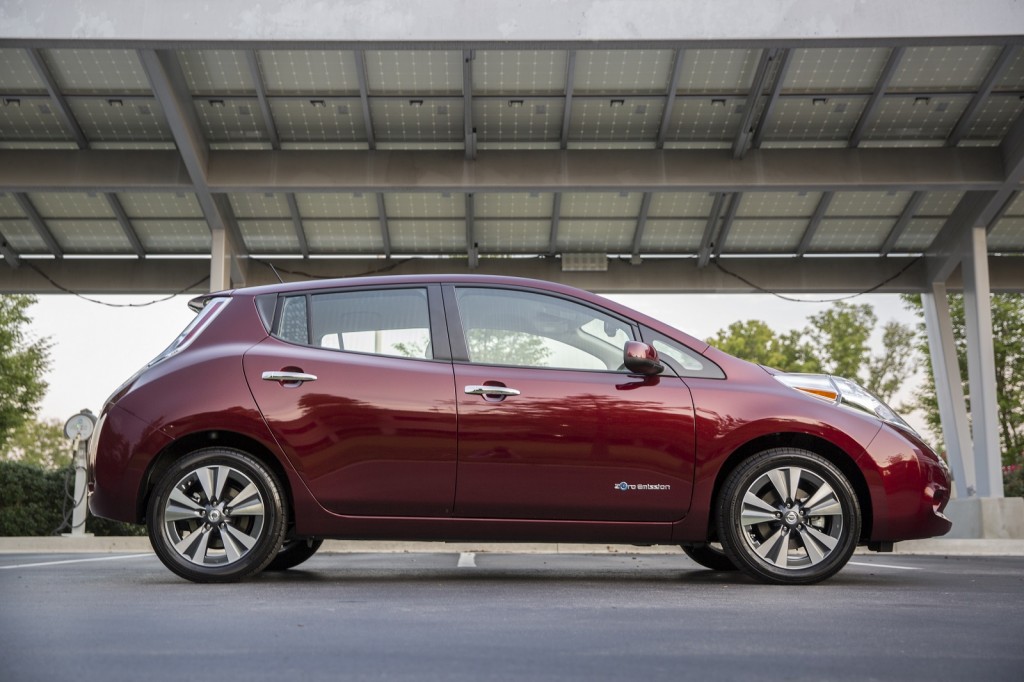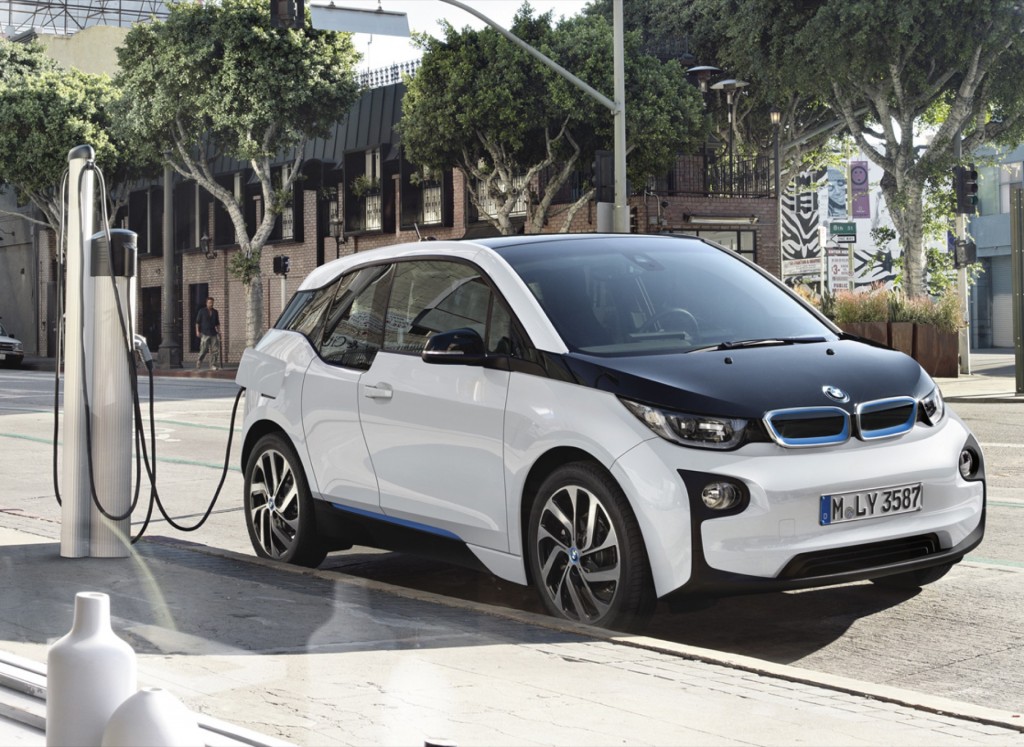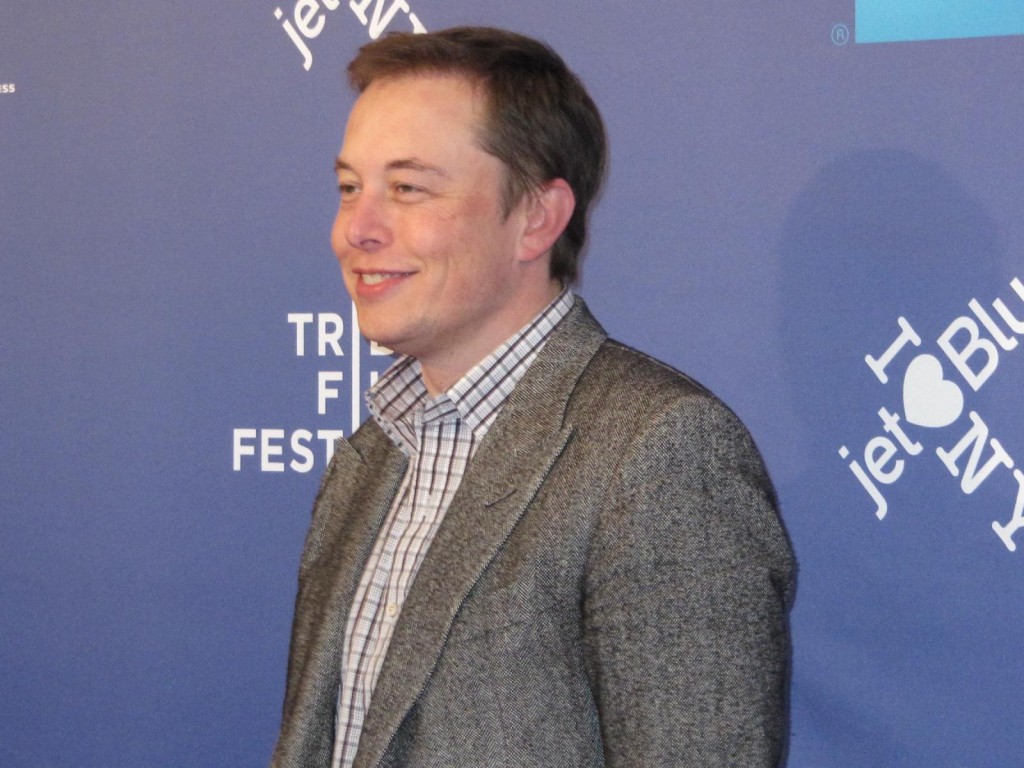
2013 Tesla Model S and 2014 BMW i3, Hudson Valley, NY, Nov 2014
It's a litany you hear often from the most ardent electric-car owners and advocates.
"Old car companies don't get it; they won't offer electric-car battery upgrades with higher capacity, so I'll never buy from them."
The response is simple: today, those upgrades would cost so much that almost no buyers would pay for them.
DON'T MISS: Tesla Roadster 3.0 340-mile battery upgrade now shipping (Jul 2016)
Today, you can count the number of car companies that offer higher-capacity battery upgrades on two fingers.
Those would be Tesla Motors, which is now shipping a new and larger battery pack to owners of its 2,500 Roadster two-seat models willing to pay the $29,000 cost.
That upgrade boosts range from an EPA-rated 245 miles for the original 53-kwh pack to roughly 340 miles for the new 70-kwh pack.

2011 Tesla Roadster Sport. Photo by Joe Nuxoll.
When the 2017 BMW i3 launched earlier this year, with new higher-capacity cells boosting its battery range from 81 to 114 miles, BMW noted in its release:
With the introduction of the new 94Ah battery, BMW gives BMW i customers the opportunity of retrofitting their purely electric BMW i3 (60 Ah) with the new 33 kWh battery as part of the a high-voltage retrofit program. This program is available in select markets.
BMW later specified that the U.S. would not be one of those markets—though in the same release it committed to using the traded-in packs for stationary storage in those markets where it did offer upgrades.
ALSO SEE: Nissan Leaf New Battery: $5,500 For Pack With Heat-Resistant Chemistry (Jun 2014)
The Nissan Leaf, which has sold more units to date than any other plug-in car in history, does not offer a higher-capacity pack upgrade.
The company's U.S. arm did offer to replace older 24-kwh packs in its earlier models with packs of a similar capacity using a new and more heat-resistant cell, but only for those customers whose packs had degraded significantly over a short period of time.
While it appears that the new 30-kwh pack fitted to some models of the 2016 Nissan Leaf occupies the same form factor as the older 24-kwh battery, Nissan has declined to respond to questions about whether it is physically possible to swap the new pack for an old one.

2016 Nissan Leaf
None of the other makers now offering plug-in cars of various types—including Audi, Cadillac, Chevrolet, Fiat, Ford, Honda, Hyundai, Kia, Mercedes-Benz, Porsche, Toyota, or Volkswagen, among others—has any battery upgrade program of any sort.
Carmakers are somewhere between baffled by and resistant to the idea of upgrades, noting that cars are not consumer electronic devices that get swapped out every 18 months.
Asked about the possibility of upgrading 2012-16 Ford vehicles from their disliked MyFordTouch infotainment system to the new Sync 3.0 interface, for instance, one Ford executive put the industry's view on post-sale upgrades best.
CHECK OUT: Electric-Car Buyers Expect Battery Upgrades To Be Available
"The upgrade path," he said firmly, "is a new vehicle."
Denise Gray, CEO of LG Chem Power, the U.S. battery group of the Korean conglomerate LG Chem, suggested in a January interview that this attitude may not last forever.
But it would require a radical rethink of a car's lifespan—and the automaker's business model, which is based simply on making and selling new vehicles at a profit.

2013 Tesla Model S and 2014 BMW i3, Hudson Valley, NY, Nov 2014
Carmakers essentially offer no retrofit equipment of any kind for cars after their sale, and modifications to cars on the road are generally only done under duress—whether under an official recall negotiated with the NHTSA or to fix some condition that could trigger such a recall.
Aftermarket engines, transmissions, and other major running gear are offered, but getting them certified to comply with emission regulations is extremely challenging.
These days, many such parts are used either in hand-built hot rods, older vehicles, or cars of questionable emission certification status, especially in states with lax or nonexistent annual inspection rules.
In May, electric-car owner and advocate Tom Moloughney wrote that BMW North America had confirmed it would not offer a 33-kwh battery upgrade for its 2014-2016 i3 electric cars.
A lengthy and contentious discussion erupted in the BMW i3 Owners group on Facebook—including a suggestion that i3 owners should sue BMW for not making the bigger battery available and hence radically diminishing the value of the current owners' cars.

2017 BMW i3
Comments on that thread and articles on this site support the view that carmakers are not in the upgrade business, although they could certainly design and engineer a higher-capacity battery pack retrofit if they desired.
Others suggest that attitude will leave legacy makers squeezed by new entrants with business models that use modularity in the design of their cars, meaning makers that don't shift or pivot will be left hanging.
Those are essentially the two sides of the discussion.
And while some owners would clearly benefit from such an upgrade—especially those who put more miles than average on their cars and keep them for longer periods—what's missing in virtually all such discussions is the cost equation.
Let's run some math, assuming that in 2021, a 2014 BMW i3 will be seven years old, and have perhaps 70,000 miles on it, making it a good candidate for a retrofit.

2017 BMW i3
If lithium-ion cell costs have fallen to the magic $100-per-kwh level by then, the cells for the i3's 33-kwh replacement pack would cost $3,300. Add 30 percent for the rest of the electronics and the pack enclosure.
Then double that number to cover R&D, administrative costs, overhead, and so forth, including the costs of re-certifying the car as safe and compliant with all regulations after replacing such a major part.
That gives you the likely price at which the carmaker would sell that 33-kwh upgrade part to the dealer: about $8,600.
Which means that such a retrofit at the dealer would likely run the owner about $10,000 by the time all is said and done.
Note that BMW is not likely to sell replacement packs over the parts counter to just anyone who wanders in the door, we should add. This would be a dealer installation only.

2013 Tesla Model S and 2014 BMW i3, Hudson Valley, NY, Nov 2014
Meanwhile, that seven-year-old BMW i3 with 70,000 miles on it is likely to be worth less than $20,000.
So does it really make sense to pay half again as much as the car is worth to extend its life another seven years?
As Moloughney pointed out in a post earlier this year, the answer is no: it makes no sense at the moment.
The costs get even tougher as you get to higher-capacity packs: updating a 65-kwh Tesla Model S with the rumored 100-kwh pack could cost more than the $29,000 cost of that Roadster 3.0 upgrade.
Moreover, BMW gets zero-emission vehicle credits in California and nine other states for selling a new battery-electric vehicle.
It gets nothing for selling a replacement pack, and the California Air Resources Board is likely to prefer that it sell another new zero-emission car instead of updating an existing one.

2017 BMW i3
Some readers suggested that automakers will have to find new revenue streams for their dealers' service departments as battery-electric vehicles proliferate, given their reduced service needs due to lesser complexity and fewer moving parts.
If so, that's likely to boost the cost of a dealer-installed battery update even higher.
But in the end, the control lies with the carmaker. So put yourself in the shoes of BMW's chief financial officer for a moment.
If BMW has the choice of selling a replacement battery for a few hundred dollars in profit, or a new vehicle for a few thousand dollars in profit, which should it take?
The math is the sticking point, in other words—as even Tesla CEO Elon Musk has admitted, saying in a 2015 blog post that pack upgrades don't make sense for current owners.
Because the company expects batteries to improve at 5 percent a year, he wrote, it's better for owners to wait until the oldest Teslas have more miles and batteries are cheaper.

'Revenge of the Electric Car' premiere: Tesla Motors CEO Elon Musk on red carpet
And that's really the bottom line: today, and for several years in the future, lithium-ion cells are too costly to make pack upgrades appealing, because they'll cost too much.
Fast-forward to 2025, when cells may cost $80 or $90 per kwh, and the math changes notably.
Then, retrofitting older electric cars with new and vastly longer-range packs may become a very appealing business to replace combustion-engined cars at a lower cost.
But today, pack replacements are one of those ideas that makes enormous sense to electric-car drivers, but just don't pencil out in the real world.
Ask your nearest electric-car owner at what price would be appealing for a replacement battery with 50 percent more range.
We're betting it's not $10,000.
_______________________________________













